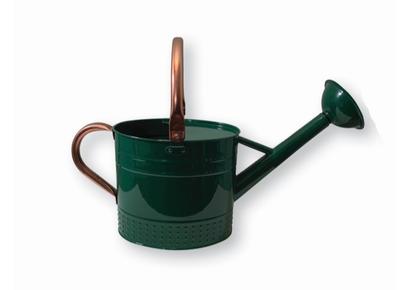
Sowing hardy annual flowers
Perhaps you started growing cut flowers in lockdown, or you’re a seasoned grower with decade-old dirt under your nails. Cut flower growing is on the rise, and many of these plants are just beautiful things to grow even if you have no intention of cutting them. September is usually the most bountiful time for anyone growing productive crops of food and flowers. Even though you may be boasting beautiful bunches right now, find a little time and energy to sow some seeds now, for next year. Many hardy annuals hugely benefit from being sown now in autumn, rather than in spring.
At this time of year, the ground has built up a lot of warmth from summer, and the air is starting to cool. Warm soils and autumn rains means seeds establish well and develop really impressive root systems. The cool air of autumn prevents their stems and leaves rocketing away at a pace the roots can’t support. Unless they get stressed by drought and ‘bolt’ by trying to flower this year, autumn-sown hardy annuals act like they’re in it for the long haul. They get their roots down deep, they’re in no rush to flower, they form really sturdy bushy rosettes of leaves and slowly bulk up over winter. Come spring, they’re ready to rocket away. Their speed of growth, size and productivity can make them almost unrecognisable compared to the same type of plant sown in spring. Ammi majus (bishop’s weed) is a perfect example; spring sown will be 40-80cm, but autumn-sown gets up to over 2 metres!
The following can be grown outside in pots, or sown directly onto the soil now, and kept without any protection all through winter in most parts of the UK. In the coldest areas, or if there are heavy frosts forecast, protect young plants with cloches or horticultural fleece.
- Ammi majus (bishop's weed)
- Briza maxima (quaking grass)
- Calendula officinalis (pot marigold)
- Centaurea cyanus (cornflower)
- Consolida (larkspur)
- Linum grandiflorum (flax)
- Hordeum jubatum (squirrel tail grass)
- Nigella damascena (love-in-a-mist)
- Lunaria annua (honesty)
- Papaver somniferum (opium poppy)
- Papaver rhoeas (Shirley poppy)
- Papaver commutatum (ladybird poppy)
Other hardy annuals benefit from a bit more protection. You need somewhere bright, cool and fairly protected to keep them over winter in pots, like an unheated greenhouse or cold frame. Or sow them directly outside somewhere sheltered if you’re in a warmer are, but be ready with fleece or cloches if frosts are forecast.
- Adonis aestivalis
- Cerinthe major 'Purpurascens'
- Eschscholzia californica (California poppy)
- Nemophila menziesii (baby blue eyes)
- Lathyrus odoratus (sweet pea)
- Linaria moroccana Fairy Bouquet Group (toadflax)
Not only does sowing now save you heaps of time in spring, you get so much more back for the effort put in. You need fewer plants, because they’re bigger, and they bulk up while the weather is cooler and wetter, meaning your little plants are much less demanding of needing to be watered. Plus, you have beautiful green young plants to bring you hope of summer to come, all the way through winter.


